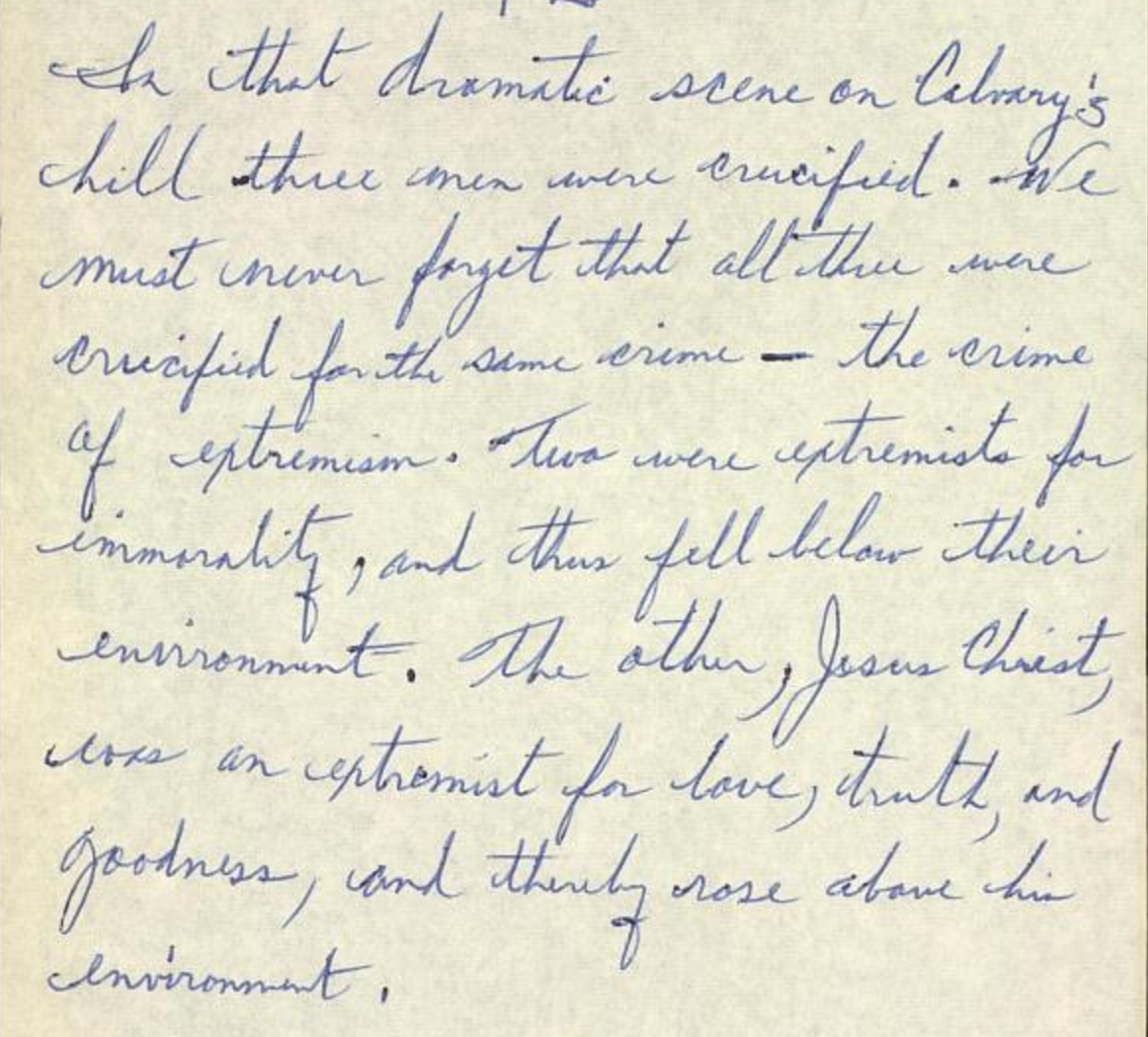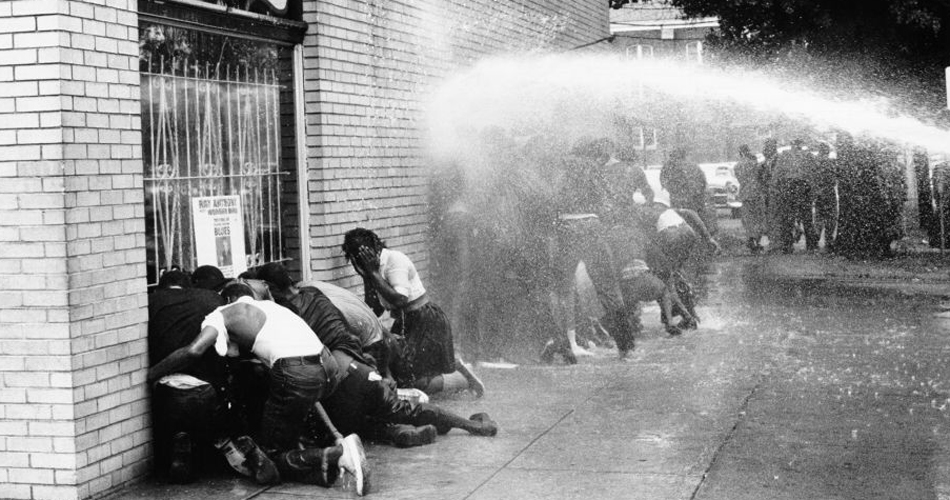After Dr. King had been jailed, the SCLC’s leader, James Bevel, organized the Children’s Crusade as a way to help desegregate Birmingham.

-thegospelcoalition.org

-peoplesworld.org
“The Birmingham Campaign was a movement led in early 1963 by the Southern Christian Leadership Conference (SCLC) which sought to bring national attention of the efforts of local black leaders to desegregate public facilities in Birmingham, Alabama.”
~ Blackpast.org
After Dr. King had been jailed, the SCLC’s leader, James Bevel, organized the Children’s Crusade as a way to help desegregate Birmingham.
During Dr. King’s captivity in the Birmingham City Jail, he wrote a famous letter that argued his actions of protest were not “unwise” as the newspapers had indicated. He included the four steps of peaceful protest, which, according to him, were, “collection of the facts to determine whether injustices exist; negotiation; self purification; and direct action.” (Letter From Birmingham Jail).

-thegospelcoalition.org

-peoplesworld.org
“While confined here in the Birmingham city jail, I came across your recent statement calling my present activities ‘unwise and untimely.’ Seldom do I pause to answer criticism of my work and ideas. If I sought to answer all the criticisms that cross my desk, my secretaries would have little time for anything other than such correspondence in the course of the day, and I would have no time for constructive work. But since I feel that you are men of genuine good will and that your criticisms are sincerely set forth, I want to try to answer your statement in what I hope will be patient and reasonable terms. I think I should indicate why I am here in Birmingham, since you have been influenced by the view which argues against ‘outsiders coming in.’ I have the honor of serving as president of the Southern Christian Leadership Conference, an organization operating in every southern state, with headquarters in Atlanta, Georgia. We have some eighty five affiliated organizations across the South, and one of them is the Alabama Christian Movement for Human Rights. Frequently we share staff, educational and financial resources with our affiliates. Several months ago the affiliate here in Birmingham asked us to be on call to engage in a nonviolent direct action program if such were deemed necessary. We readily consented, and when the hour came we lived up to our promise. So I, along with several members of my staff, am here because I was invited here. I am here because I have organizational ties here. But more basically, I am in Birmingham because injustice is here. Just as the prophets of the eighth century B.C. left their villages and carried their ‘thus saith the Lord’ far beyond the boundaries of their hometowns, and just as the Apostle Paul left his village of Tarsus and carried the gospel of Jesus Christ to the far corners of the Greco Roman world, so am I compelled to carry the gospel of freedom beyond my own home town. Like Paul, I must constantly respond to the Macedonian call for aid.” - Letter From Birmingham Jail
Organization of the Children’s Crusade:
The SCLC and Dr. King began to organize children to peacefully march for their rights. At first the SCLC attempted to get adults in Birmingham to help, but after a while the African American adults gave up since they didn’t want their jobs to be in jeopardy. “In order to sustain the campaign, SCLC organizer James Bevel proposed using young children in demonstrations. Bevel’s rationale for the Children’s Crusade was that young people represented an untapped source of freedom fighters without the prohibitive responsibilities of older activists.” (Stanford University) Bevel believed white people would be more empathetic to children than adults. Adults risked their jobs by marching. However, children’s parents were against them participating in the march, so they had to get the message out to kids secretly. The SCLC asked popular DJs to spread secret messages over the radio informing children where and when the children would go to march.
“All I can remember is that we were leaving the store to catch our bus home. We came out onto the street and there was a large crowd. All ages, mostly black, children and adults, yelling and screaming and crying. There were lots of policemen with dogs and bullhorns, and firemen with hoses. The hoses were on full blast, the dogs were snapping and snarling, and adults and children were the targets. I was scared and did not know what was going on.”
~Bob Diccicco, NBC Nightly News
“ If it was necessary to get arrested, we were willing to do so. In our young world of peer-to-peer pressure, to be “jailed for freedom” was considered a badge of courage, valor and honor.
-Melvin Todd, NBC Nightly News
The march included children from Birmingham and other locations. Many children walked miles in order to participate. When all of the children arrived at Birmingham, Bevel sent the children to march in groups of fifty. When one group was jailed another group took its place. Even though the children marched peacefully, their protest was met with violence by local law enforcement. At Commissioner Of Safety Eugene “Bull” Connor’s command, “They released the fire hoses and the police dogs” (Eloise Gaffney, Civil Rights Radio), the children were taken to prison, and beaten. Despite the violence, the children continued to march over the next three days. The police used violence to show that anyone who protested would be punished. The children weren’t afraid, however, since they were motivated by the possibility of a better tomorrow.
Reactions:
The violence was an attempt to stop the protests, but the tactic backfired. “Footage and photographs of the violent crackdown in Birmingham circulated throughout the nation and the world, causing an outcry.” (Biography.com), Americans were outraged at the tactics used against the children. Their eyes were opened to how widespread racial descrimination was. It motivated white people to help break the barrier of segregation, and it ended up being the main motivator for President John F. Kennedy’s proposal of the Civil Rights Act of 1964.
"And I’ll never forget listening, but doing the math and hearing a man say, if the children participate in this demonstration, in this peaceful demonstration, all of America will see that even children understand the difference between right and wrong and that children want the best possible education.."
~ Freeman Hrabowski lll, pbs.org
“My teacher was wise enough to know we would not be able to stay in our seats, so we were allowed to go to the window when the black students passed by like a parade. There was no sound, no shouting, no raised hands. Just silence. I watched a group of about 50 male and female students, just like me except for the color of their skin, walk in unison. I knew from other events at that time that they wanted an equal education, an equal opportunity to succeed. That touched my heart.”
~Linda C. Thacker, NBC Nightly News
-CBS News